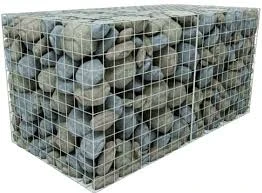-
 Phone:
Phone: -
 Email:
Email:

Efficient Solutions for Cardboard Bale Wire Management and Recycling Practices
The Importance of Cardboard Bale Wire in Recycling
In today's world, where environmental sustainability has become a pressing issue, recycling plays a crucial role in conserving resources and reducing waste. The cardboard recycling industry, in particular, has seen significant growth, driven by the increasing awareness of the need to recycle and the financial incentives it offers. One of the unsung heroes of this industry is cardboard bale wire, a critical component in the efficient management and recycling of cardboard materials.
Cardboard bale wire is specifically designed for baling cardboard waste. Baling refers to the process of compressing cardboard waste into compact bundles, or bales, which are then bound by wire to facilitate easier handling, transportation, and storage. This method not only optimizes space but also ensures that the cardboard remains intact and free from contamination during transit. The use of bale wire is essential for maintaining the integrity of the bales, allowing recyclers to maximize the value of the materials they collect.
There are several types of bale wire available in the market, each suited for different applications. The most common types are steel wire and polypropylene wire. Steel wire is known for its strength and durability, making it ideal for heavy-duty baling applications. It can withstand the rigors of transportation and handling, ensuring that the bales do not fall apart. On the other hand, polypropylene wire is lightweight and resistant to rust and corrosion, making it suitable for various other recycling purposes where environmental exposure might be a concern.
The use of cardboard bale wire is not only prevalent in recycling centers but also in businesses that generate substantial amounts of cardboard waste, such as retail stores, warehouses, and manufacturers. By employing cardboard bale wire, these businesses can effectively manage their waste, reduce litter, and contribute to environmental conservation. Baling cardboard allows them to take advantage of recycling programs that may offer financial returns for recyclable materials.
cardboard bale wire

Moreover, the use of cardboard bale wire contributes to the overall efficiency of the recycling process. Baled cardboard takes up significantly less space than loose cardboard, which leads to improved storage capacity and minimizes the logistical issues associated with transporting large volumes of waste. This efficiency is crucial in areas where space is limited, such as urban environments where businesses may struggle with waste management.
In addition to practical benefits, using cardboard bale wire also sends a strong message about corporate responsibility. Companies that implement effective waste management strategies, including the use of balers and bale wire, demonstrate their commitment to sustainability. This responsible practice enhances their brand image, aligning them with environmentally conscious consumers who prefer to support businesses that prioritize sustainability.
Furthermore, the lifecycle of the materials involved in this process deserves attention. Cardboard that is collected and processed using bale wire can be recycled into new products, such as paper, packaging, and even insulation materials. This closed-loop cycle significantly reduces the demand for virgin materials, conserving natural resources and reducing landfill waste. Thus, the role of cardboard bale wire extends beyond its immediate function; it contributes to a broader environmental narrative about resource conservation and waste reduction.
In conclusion, cardboard bale wire plays an essential role in the recycling industry, particularly for cardboard waste. Its strength, durability, and versatility facilitate the efficient management of recyclable materials, making it a vital tool for businesses and recycling centers alike. As we continue to advocate for sustainable practices, the importance of effective waste management and recycling solutions cannot be overstated. Through the proper use of cardboard bale wire, we are not only creating a cleaner environment but also nurturing a culture of recycling that benefits future generations. By emphasizing the significance of this often-overlooked component in the recycling process, we can inspire more entities to take action and contribute to a more sustainable planet.
-
Wire Mesh for Every Need: A Practical SolutionNewsJul.25,2025
-
Steel Fences: Durable, Secure, and Stylish OptionsNewsJul.25,2025
-
Roll Top Fencing: A Smart Solution for Safety and SecurityNewsJul.25,2025
-
Cattle Farm Fencing Solutions for Maximum SecurityNewsJul.25,2025
-
Affordable Iron Binding Wire SolutionsNewsJul.25,2025
-
Affordable Galvanized Wire SolutionsNewsJul.25,2025
-
Wire Hanger Recycling IdeasNewsJul.25,2025








